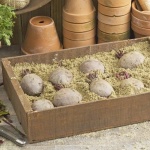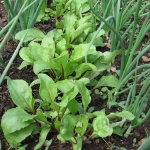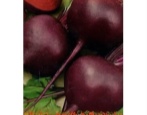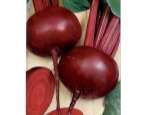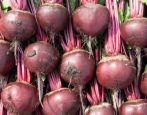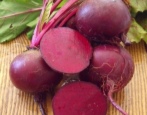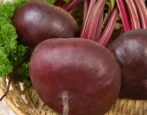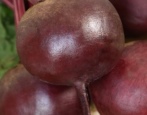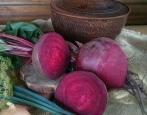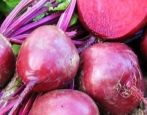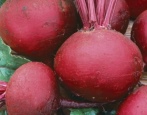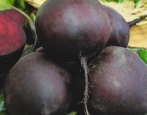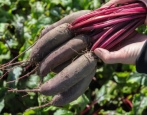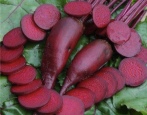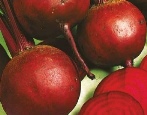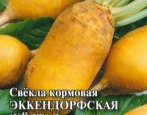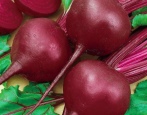
- Year of approval: 1943
- The form: cylindrical
- Weight, g: 250-950
- Pulp color : yellow
- Composition : dry matter content up to 12-12.5%
- Appointment: for pets
- Storage: suitable for winter storage
- Growing regions: North, North-West, Central, Volgo-Vyatka, TsChO, North Caucasian, Middle Volga, Nizhnevolzhsky, Ural, West Siberian, East Siberian, Far East
- View: stern
- Ripening terms: mid-season
Farmers who are engaged in raising livestock, breeding rabbits, try to allocate part of the plantations for the cultivation of forage crops for feeding. Often, preference is given to fodder beet varieties, including the Eckendorf yellow beet grown in different climatic zones of Russia.
Breeding history
Eckendorf yellow beetroot is a variety with a long history, bred in Germany in 1938. After a series of variety trials, in 1943 the fodder crop was entered into the State Register of Admitted to Use.
Description of the variety
This variety belongs to the amaranth class. The fodder beet is a plant with a vigorously growing stem extending up to 80-100 cm in height. The powerful tops are thickened with partially erect and recumbent leaves of a bright green color. The leaf plates are smooth, with a pronounced luster, located openly upward.
A characteristic feature of the variety is the elevation of a part of the ripened beets above the soil surface, which greatly facilitates the harvesting process. The complete ripening of root crops is indicated by yellowed and partially dead leaves.
Characteristics of the appearance of the plant and root crops
The beet variety Ekkendorf yellow represents the category of large-fruited varieties. Root crops ripen with a weight of 250-950 grams. The tubers have a neat shape - cylindrical or round. The length of the specimen reaches 18-20 cm, and the diameter is 6-7 cm. The ripe fruit has a yellowish-greenish or white-milky color. The longer the root vegetable, the higher its taste. The peel of the fruit is thin, dryish, even, sometimes there are minor flaws.
The harvested crop is easily transported and can also be stored for a long time. The variety is ideal for winter storage. For this, a dry and dark room with a temperature regime of +2 degrees is selected.
Purpose and taste of tubers
This species is characterized not only by the excellent taste of the tubers, but also by the tops, which are very popular with the animals. The yellow flesh of the root vegetable has a firm, firm and moderately juicy texture. The taste is dominated by light sweetness, complemented by a weak beetroot aroma.
The fruits have a high nutritional value. The pulp of tubers contains an increased amount of fiber, dietary fiber, trace elements, as well as iodine, iron, potassium, ascorbic acid and rutin.
The excavated tubers are ideal for feeding cattle, poultry and rabbits. Not only fruits are suitable for food, but also tops. The leaves of the culture are used in the preparation of herbal flour.
Maturation
The variety is mid-season. From the moment the sprouts appear to the ripening of full-fledged fruits, 140-155 days pass. Mass harvesting begins in late September - early October, the main thing is to collect root crops before a cold snap. Cleaning is carried out manually or mechanically.
Yield
High yield is one of the advantages of the variety. On average, 100-150 tons of fodder root crops are chosen from 1 hectare of plantations.
Growing and caring
Fodder beets are cultivated mainly by the sowing method. For this, a section is prepared in advance in which grooves are made up to 3 cm deep.It is recommended to sow seeds in the first half of May, when the air temperature is stable + 10-15 degrees. For growth and development, an indicator of + 18-22 degrees is considered comfortable. Sowing is carried out according to the scheme 20x45 cm, after planting the beds are abundantly moistened. Potatoes and silage corn are considered the best precursors for fodder crops.
Caring for beets is simple, it is enough to water weekly, loosen the soil with a flat cutter, apply top dressing (3-5 times per season), thin out (carry out the procedure after 3 leaves appear on the plants), leaving the strongest specimens, and also carry out preventive measures , preventing diseases and pests.

Beetroot tolerates cold snaps, therefore it is widely grown in the open field. When planting beets, you need to correctly determine the sowing time, choose a suitable place, prepare the beds, and do pre-sowing seed treatment.
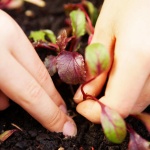
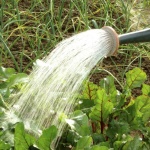
Soil requirements
The culture does not have special requirements for the quality of the soil, but, like most of its relatives, fodder beets prefer structured, rich in organic components, light, breathable soils. If planting is carried out in loamy or sandy loam soils, then it is recommended to saturate them with nutrients. Landing in heavy, swampy and acidic soils is undesirable.
Required climatic conditions
Despite its good stress resistance, beets prefer to grow in leveled, cleaned and sunny areas, protected from the cold wind. It is also worth noting that there should be a lot of light on the site, that is, most of the day.
Disease and pest resistance
Due to its high immunity, the fodder crop is protected from many diseases of the Amaratnovs, however, if agricultural technology is violated, the beets can be exposed to downy mildew. In addition, this species is resistant to flowering.

